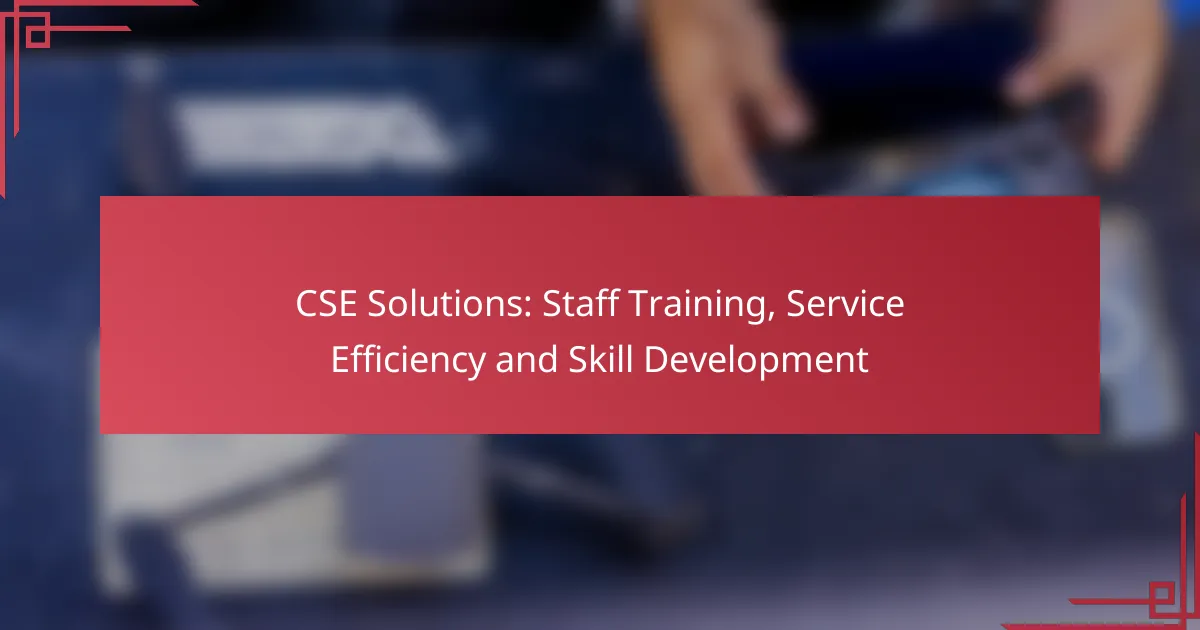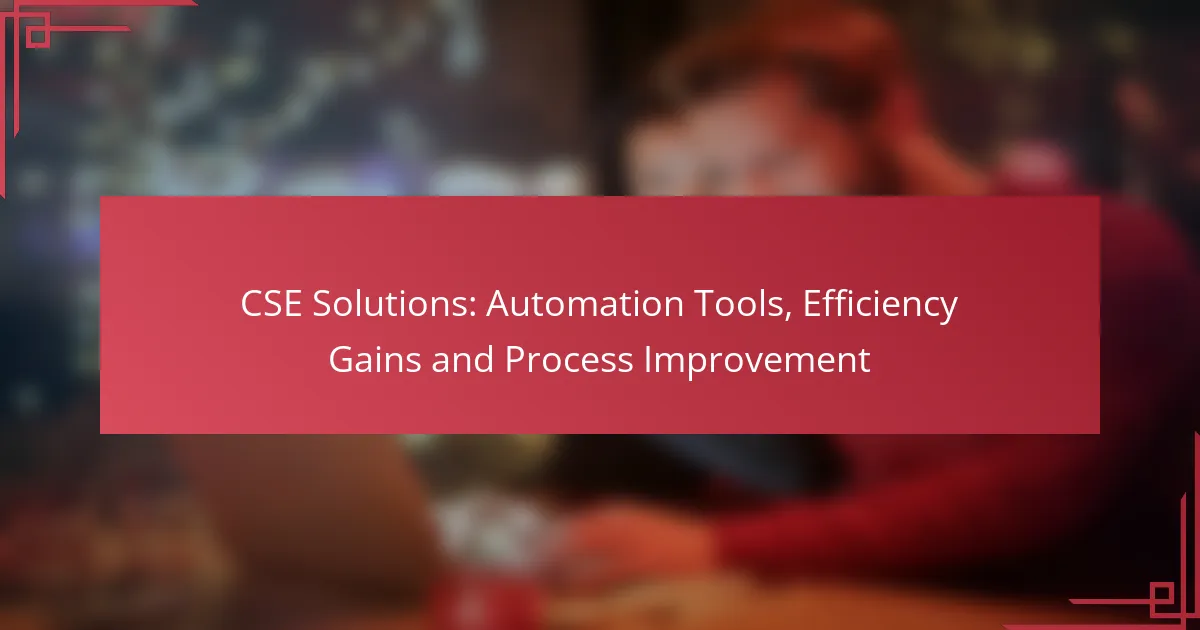Effective Customer Service Excellence (CSE) solutions are essential for organizational success, yet they often encounter pitfalls such as insufficient stakeholder engagement and poor data management. By focusing on robust process management strategies and proactive avoidance techniques, organizations can enhance efficiency and collaboration while minimizing risks. Implementing clear project goals and comprehensive training ensures that all stakeholders are aligned, ultimately leading to more sustainable CSE initiatives.
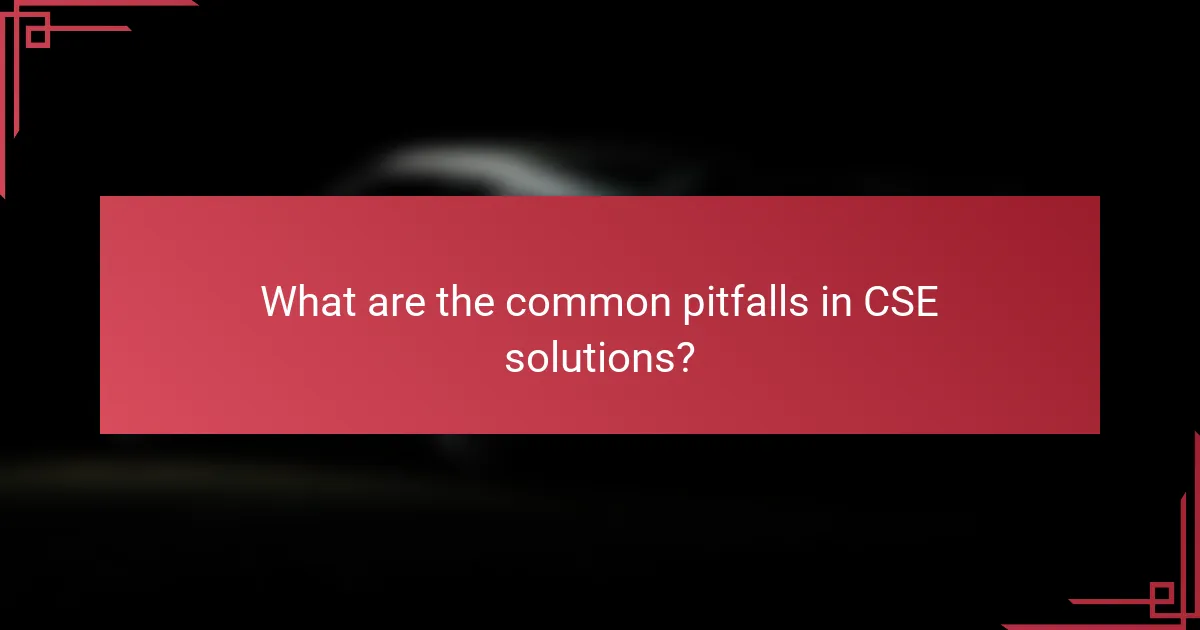
What are the common pitfalls in CSE solutions?
Common pitfalls in CSE (Customer Service Excellence) solutions include lack of stakeholder engagement, poor data management practices, inadequate training for users, ignoring regulatory compliance, and underestimating project timelines. Addressing these issues early can significantly enhance the effectiveness and sustainability of CSE initiatives.
Lack of stakeholder engagement
Failing to engage stakeholders can lead to misaligned goals and a lack of support for CSE solutions. It’s crucial to involve key stakeholders from the outset to ensure their needs and expectations are met.
Regular meetings and feedback sessions can help maintain engagement. Use surveys or focus groups to gather insights and foster a sense of ownership among stakeholders.
Poor data management practices
Effective data management is essential for successful CSE solutions. Poor practices can result in inaccurate information, which undermines decision-making and customer interactions.
Implementing robust data governance policies can mitigate risks. Consider using centralized databases and regular audits to ensure data integrity and accessibility.
Inadequate training for users
Inadequate training can hinder the adoption of CSE solutions, leading to frustration and inefficiency among users. Comprehensive training programs are vital to equip staff with the necessary skills and knowledge.
Utilize a mix of training methods, including hands-on workshops, online courses, and ongoing support. Regularly update training materials to reflect changes in processes or technology.
Ignoring regulatory compliance
Ignoring regulatory compliance can expose organizations to legal risks and penalties. It’s essential to stay informed about relevant regulations that impact CSE solutions.
Conduct regular compliance audits and provide training on applicable laws, such as data protection regulations. Establish a compliance officer role to oversee adherence to these standards.
Underestimating project timelines
Underestimating project timelines can lead to rushed implementations and subpar results. Accurate time estimation is critical for successful CSE solution deployment.
Utilize project management tools to create realistic timelines and milestones. Incorporate buffer periods for unexpected challenges and ensure regular progress reviews to stay on track.
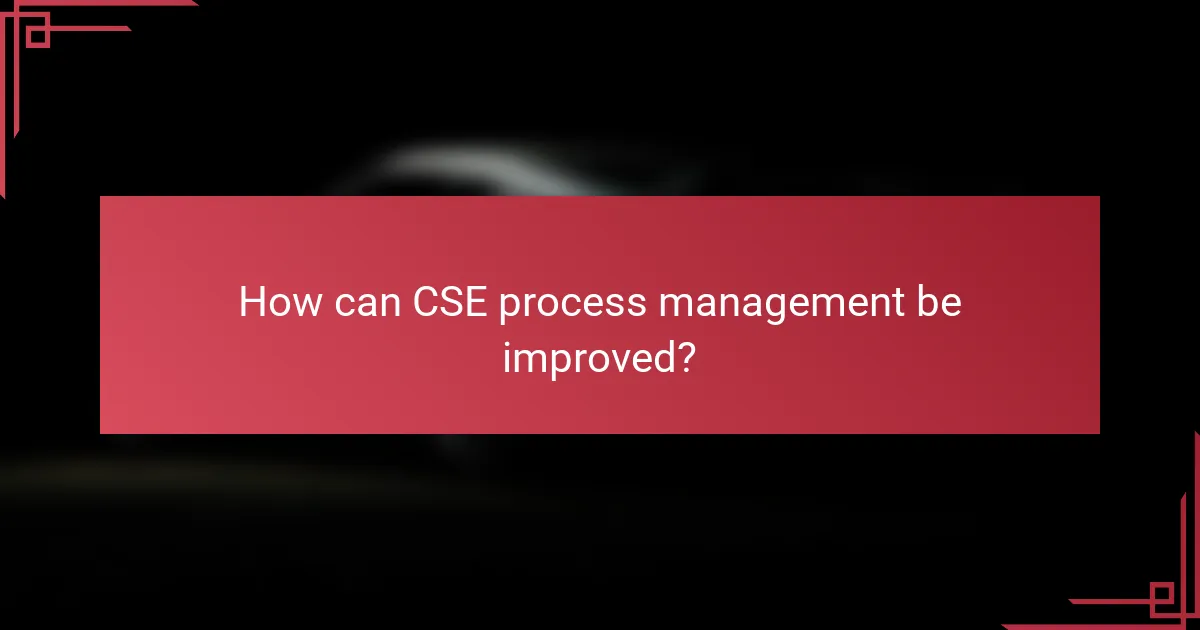
How can CSE process management be improved?
Improving CSE process management involves adopting effective strategies that enhance efficiency and collaboration. Key areas to focus on include agile methodologies, project management tools, performance reviews, and communication enhancements.
Implementing agile methodologies
Agile methodologies promote flexibility and responsiveness in project management, allowing teams to adapt quickly to changes. By breaking projects into smaller, manageable increments, teams can deliver value more frequently and gather feedback effectively.
Consider using frameworks like Scrum or Kanban, which emphasize iterative progress and continuous improvement. This approach can help identify bottlenecks early and adjust workflows accordingly, leading to better outcomes.
Utilizing project management software
Project management software streamlines task allocation, tracking, and collaboration among team members. Tools like Trello, Asana, or Jira can help visualize progress and ensure accountability.
When selecting software, consider features like integration capabilities, user-friendliness, and reporting options. Effective use of these tools can significantly reduce miscommunication and enhance overall project visibility.
Regular performance reviews
Conducting regular performance reviews allows teams to assess their progress and identify areas for improvement. These reviews should focus on both individual contributions and team dynamics, fostering a culture of accountability and growth.
Establish a schedule for reviews, such as quarterly or bi-monthly, and use metrics that align with project goals. This practice can help maintain momentum and ensure that everyone is aligned with the project’s objectives.
Enhancing communication channels
Effective communication is crucial for successful CSE process management. Establishing clear channels for sharing information can prevent misunderstandings and facilitate collaboration among team members.
Utilize tools like Slack or Microsoft Teams for real-time communication and consider regular check-ins or stand-up meetings to keep everyone informed. Ensure that all team members feel comfortable sharing updates and concerns, which can lead to more cohesive teamwork.
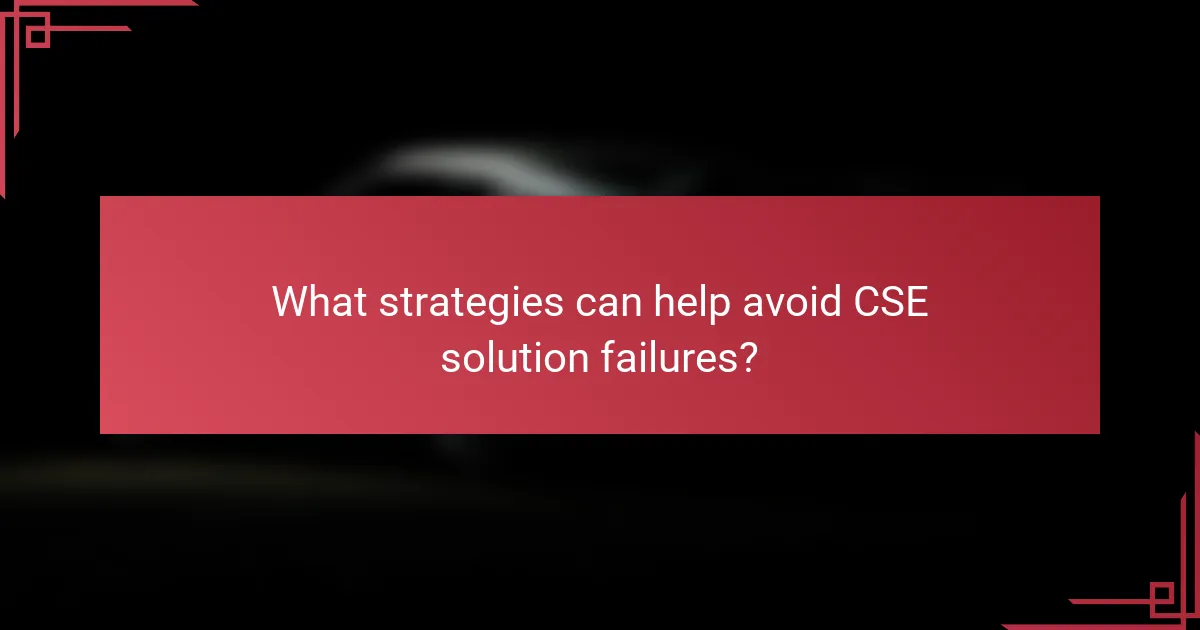
What strategies can help avoid CSE solution failures?
To avoid failures in CSE solutions, organizations should implement proactive strategies that include risk assessments, clear project goals, expert engagement, and user training. These steps help identify potential issues early and ensure that all stakeholders are aligned and prepared.
Conducting thorough risk assessments
Thorough risk assessments are essential for identifying potential pitfalls in CSE solutions. This process involves evaluating technical, operational, and financial risks that could impact the project’s success. Regularly updating these assessments throughout the project lifecycle can help mitigate unforeseen challenges.
Consider using a structured approach, such as a risk matrix, to categorize risks by likelihood and impact. This allows teams to prioritize their responses and allocate resources effectively. Engaging stakeholders in this process can also provide diverse perspectives on potential risks.
Establishing clear project goals
Clear project goals are critical for guiding the development and implementation of CSE solutions. These goals should be specific, measurable, achievable, relevant, and time-bound (SMART). By defining what success looks like from the outset, teams can maintain focus and direction throughout the project.
Involving all relevant stakeholders in goal-setting ensures that everyone understands their roles and responsibilities. Regularly revisiting these goals can help teams stay aligned and make necessary adjustments as the project evolves.
Engaging experienced consultants
Engaging experienced consultants can provide valuable insights and expertise that enhance the likelihood of CSE solution success. These professionals bring a wealth of knowledge from previous projects and can help identify best practices and potential pitfalls early on.
When selecting consultants, look for those with a proven track record in similar projects and relevant industry experience. Their guidance can streamline processes, improve decision-making, and ultimately lead to more effective solutions.
Investing in user training programs
Investing in user training programs is crucial for ensuring that end-users can effectively utilize CSE solutions. Comprehensive training helps users understand the system’s features and functionalities, reducing resistance and increasing adoption rates.
Consider offering training sessions that cater to different user levels, from basic to advanced. Providing ongoing support and resources, such as user manuals or online tutorials, can further enhance user confidence and competence in using the system.
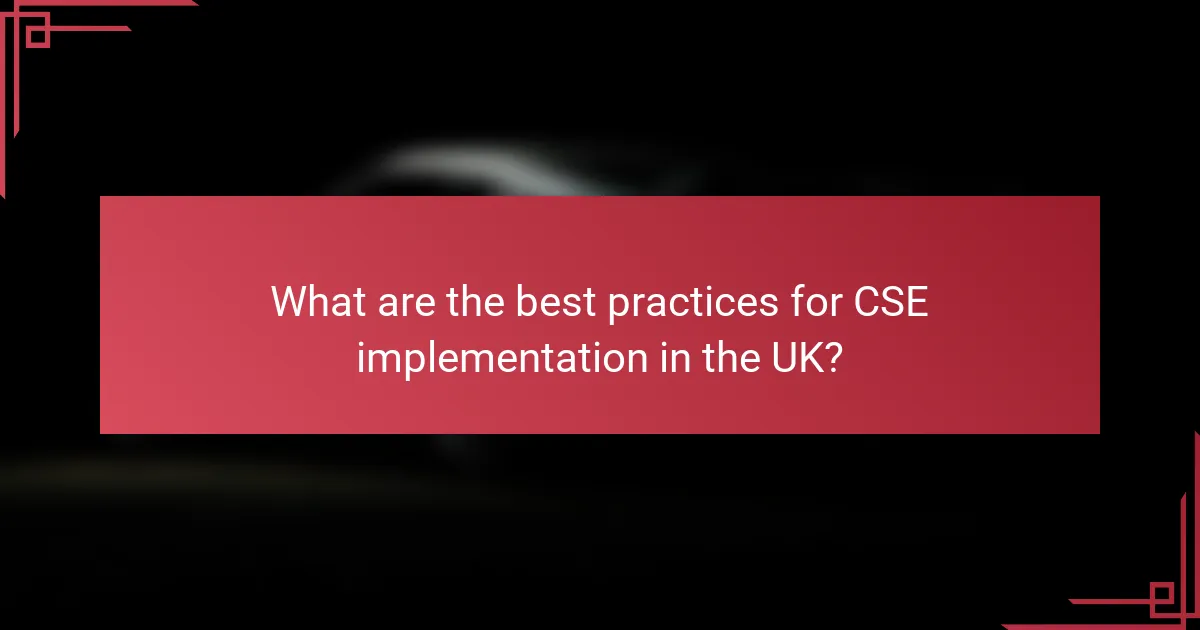
What are the best practices for CSE implementation in the UK?
Effective CSE (Customer Service Excellence) implementation in the UK requires a strategic approach that emphasizes gradual integration, continuous feedback, and adherence to local regulations. By following best practices, organizations can enhance customer satisfaction and operational efficiency.
Adopting a phased rollout approach
A phased rollout approach allows organizations to implement CSE solutions incrementally, reducing risks and enabling adjustments based on initial feedback. Start with a pilot program in a specific department or region to test the system’s effectiveness before a full-scale launch.
This method helps identify potential issues early, allowing for modifications that can enhance user experience and service delivery. Aim for a timeline that spans several months to ensure thorough testing and training for staff.
Integrating feedback loops
Integrating feedback loops is crucial for refining CSE processes. Regularly solicit input from both customers and employees to identify pain points and areas for improvement. Use surveys, focus groups, and direct interviews to gather actionable insights.
Establish a routine for reviewing feedback, ideally on a monthly basis, and implement changes based on this data. This iterative process fosters a culture of continuous improvement and ensures that the CSE system evolves to meet changing customer needs.
Ensuring compliance with UK regulations
Compliance with UK regulations is essential for successful CSE implementation. Familiarize yourself with relevant laws, such as the Data Protection Act and the Consumer Rights Act, which govern customer interactions and data handling.
Regular training sessions for staff on compliance issues can help mitigate risks associated with non-compliance. Consider consulting with legal experts to ensure that all aspects of your CSE strategy align with current regulations and best practices in the UK.
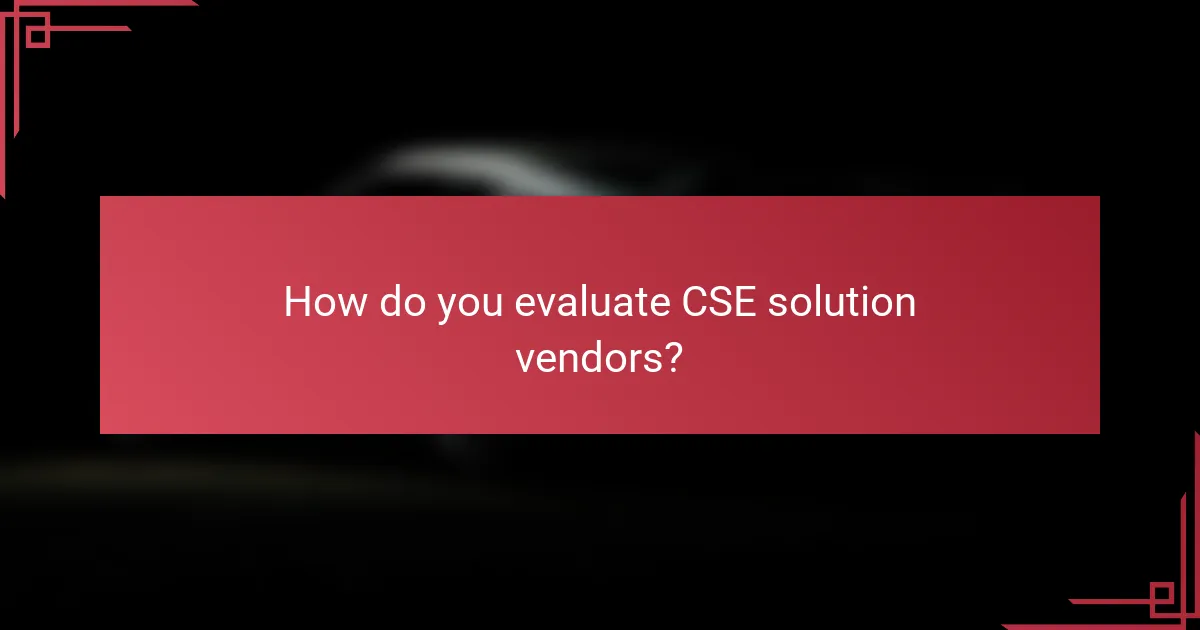
How do you evaluate CSE solution vendors?
Evaluating CSE solution vendors involves assessing their experience, reputation, and pricing models. A thorough evaluation helps ensure that you choose a vendor capable of meeting your specific needs effectively.
Assessing vendor experience and reputation
Start by examining the vendor’s history in the CSE market. Look for how long they have been in business and their track record with similar projects. A vendor with several years of experience and a solid reputation is often more reliable.
Check for industry certifications and partnerships, as these can indicate a vendor’s credibility. Additionally, consider their standing in professional communities and forums to gauge peer recognition.
Reviewing case studies and testimonials
Request case studies that showcase the vendor’s previous work. These documents should detail the challenges faced, solutions implemented, and results achieved. Look for examples that align closely with your own project requirements.
Testimonials from past clients can provide insights into the vendor’s strengths and weaknesses. Pay attention to feedback regarding customer service, project management, and overall satisfaction to better understand what to expect.
Comparing pricing models
Evaluate the pricing structures offered by different vendors. Common models include fixed pricing, hourly rates, or subscription-based fees. Understanding these options can help you choose a model that aligns with your budget and project scope.
Consider the total cost of ownership, which includes not just initial fees but also ongoing maintenance and support costs. Request detailed quotes and clarify what is included in each pricing model to avoid unexpected expenses later on.

